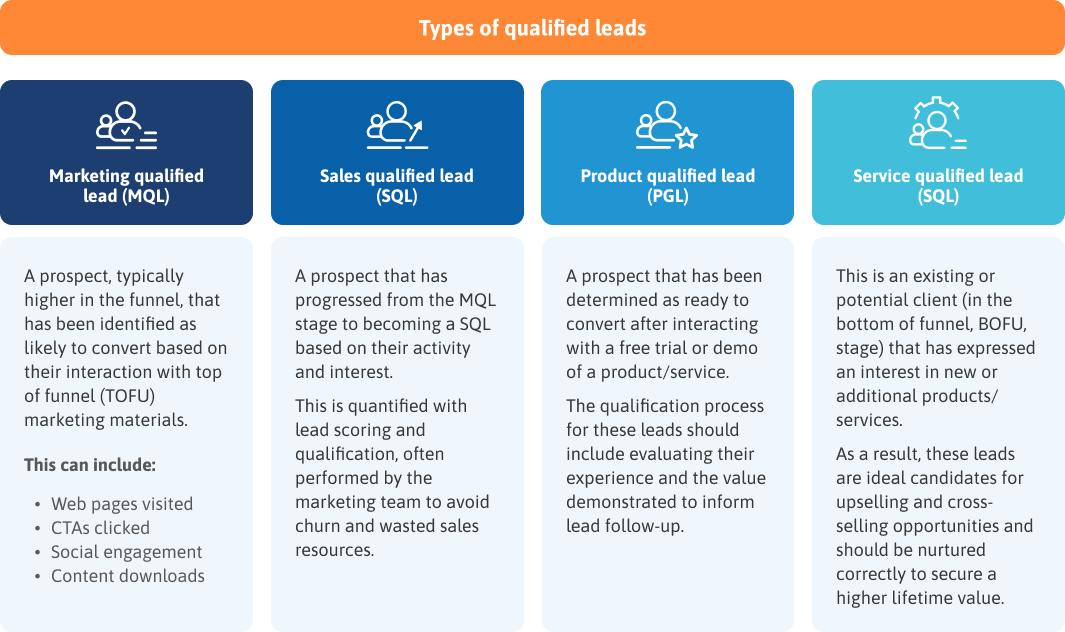Lead definitions are the parameters that determine what constitutes a lead based on its characteristics and the qualification method(s) an organization follows. Creating lead definitions is therefore a key element of guiding the lead qualification process.
These definitions should be informed by your target market and include the behavior triggers that indicate buyer intent and categorize leads into their various types.
Lead scoring is a system of assigning numerical values to actions taken by prospective buyers. While this aspect of scoring is similar to the lead definition process, the cumulative lead score serves both as an indicator of the lead’s progress through their buyer’s journey and of its quality.
These triggers should align with your lead generation goals and the typical buyer’s journey you have established. Detail is important here, as not all actions should be treated equally in terms of buyer intent. For example, a whitepaper download should not carry the same weight as a demo request.
Given its complexity, leveraging predictive lead scoring models can be highly beneficial. These utilize data from your Customer Relationship Management (CRM) database to determine the hierarchy of the data variables being tracked. Predictive lead scoring can also analyze buyer behavior in combination with data to determine which leads are most likely to complete a purchase, delivering insights that can be used to inform future strategies.
As such, lead scoring serves as the launching point for lead qualification, by indicating lead value to inform the process in general.
All of these techniques are invaluable for guiding the lead qualification process and should be routinely evaluated to assess their accuracy.



















